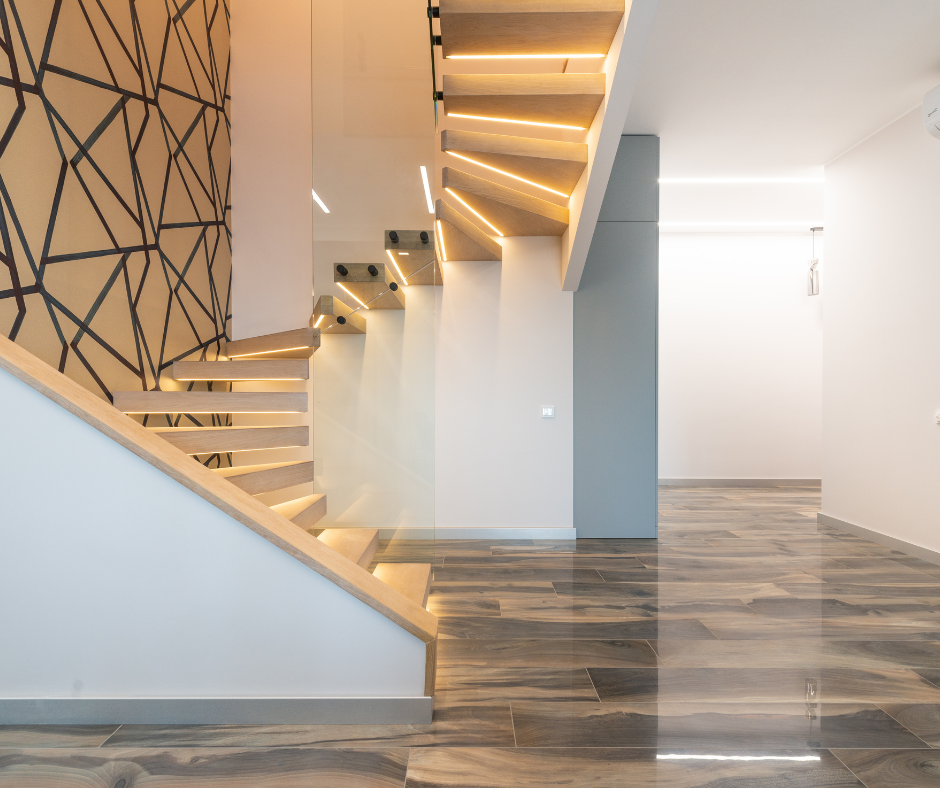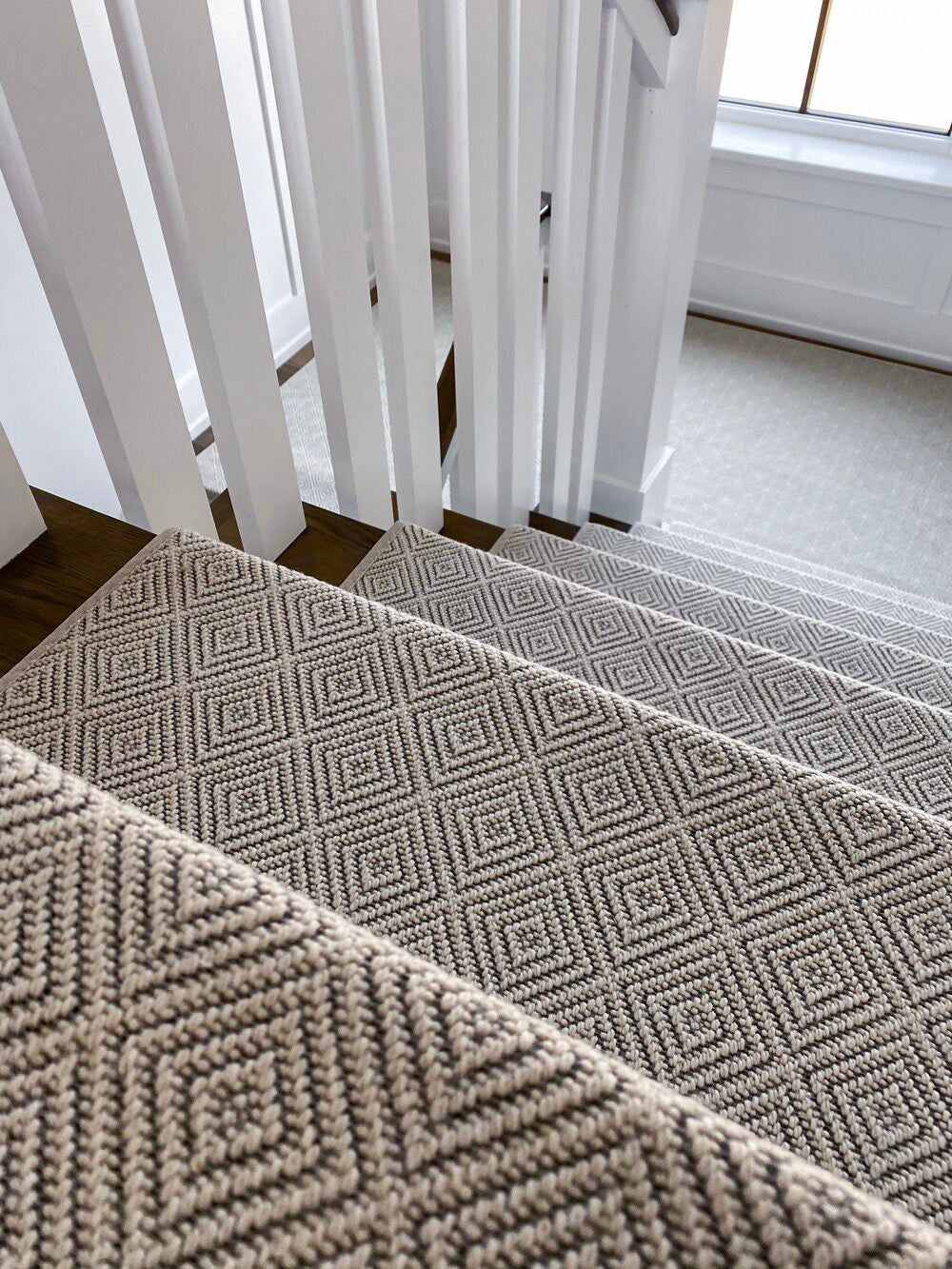Looking to elevate your home’s design with something bold, functional, and modern?
A common question we hear is what is a self supporting staircase?
And the answer is simple: it’s a staircase that holds itself up without traditional visible supports, creating a floating, open look.
In this guide, you’ll learn how this design works, what makes it so appealing, and how to pair it with elements like carpet stair treads for added safety and style.
Whether you’re building new or remodeling, understanding this staircase style can help you make smarter design decisions.
We’ll walk you through structural requirements, safety tips, and personalized upgrade options.
Keep reading to discover how this architectural feature can transform your home from ordinary to unforgettable.
How Does a Self Supporting Staircase Work?
A self-supporting staircase is built differently from the ground up—literally.
Most traditional staircases rely on a visible frame, like side stringers or posts, to hold the steps in place.
In contrast, a self-supporting staircase uses concealed structural elements—such as metal brackets, a central spine, or anchored points within the walls or floor—to support each step without the need for bulky materials.
These staircases are often custom-designed by architects or structural engineers to work with your home’s existing framework.
They might use tension cables, welded steel, or load-bearing walls to support the weight and movement of the staircase without sacrificing its clean, open appearance.
In other words, it’s not just floating—it’s engineered to do so safely and beautifully.
Why Are Self Supporting Staircases So Popular?
With the rise of modern home design and open-concept living, homeowners are gravitating toward staircases that feel lighter, cleaner, and more integrated into their surroundings.
Self-supporting staircases deliver all that—and more.
1. Visual Openness
Because these staircases don’t rely on large visible supports, they let light flow freely through your home.
This design choice can make even smaller spaces feel expansive and airy, bringing an uplifting sense of openness.
2. Minimalist Design
They fit right in with today’s preference for minimal, uncluttered spaces.
Whether you're into clean lines or a Scandinavian aesthetic, these staircases offer a seamless way to update your home’s look.
3. Unique and Personalized
Self-supporting staircases are rarely one-size-fits-all.
They can be crafted using a wide range of materials—wood, steel, glass, or a mix—and tailored to match your personal style.
Many homeowners opt for custom floating stairs that reflect their unique vision while still keeping the function and safety they need.
Understanding the Engineering Behind the Elegance
You don’t have to be a structural engineer to appreciate the complexity behind this simple design.
The trick is in the details: internal steel reinforcements, discreet anchor points, and precision measurements.
While the end result looks effortless, it’s the product of detailed planning and smart construction techniques.
Here are a few common types of structural support systems used in self-supporting staircases:
Cantilevered Design
This design has each tread anchored directly into a wall, with part of the step “cantilevered” out into space.
It’s a sleek and dramatic style that truly looks like it’s floating.
Central Spine Beam
A strong central beam—often made of steel—runs underneath or through the center of the treads.
This beam provides all the structural strength, leaving the sides open and airy.
Mono-Stringer
Similar to a spine beam, but with a more visible center support running beneath each tread.
This allows for a slightly more industrial look while still maintaining the floating effect.
Each system is engineered to hold significant weight while meeting local building codes and safety regulations.
Benefits of Choosing a Self Supporting Staircase
So why go through the extra planning and cost to install one of these staircases?
Here are a few reasons why it might be worth every penny.
A Modern Aesthetic With High Impact
If you’re drawn to clean, contemporary style, this is the staircase for you.
Self-supporting staircases often become the focal point of the home, creating an artful structure that people notice as soon as they walk through the door.
And when paired with modern-style floating wood stairs, the effect is warm, elevated, and truly unforgettable.
Wood adds a natural touch and softens the strong lines—giving you that high-end look without it feeling cold or industrial.
Light Flow and Space Optimization
Because there are no bulky supports interrupting the design, natural light can travel throughout your home much more freely.
This is a huge bonus in smaller spaces or areas without many windows.
A well-placed staircase like this can actually brighten your home and make tight areas feel more spacious.
Custom Design Opportunities
Self-supporting staircases are often designed from scratch or adapted to your unique home layout.
This is where custom floating stairs really shine.
You can choose the shape, finish, tread depth, materials, and railing design that fit your lifestyle.
Whether it’s rustic oak or matte-black steel, you’re in control of the finished look.
What to Consider Before Installing a Self Supporting Staircase
This type of staircase is a major design decision—and investment.
Here’s what to know before making the leap.
Structural Requirements
Your staircase can’t float unless it’s firmly grounded—ironically.
You’ll need a structural element like a load-bearing wall, concrete base, or reinforced steel structure to safely anchor the stairs.
A professional engineer or contractor will need to evaluate your space and determine what’s possible.
Safety Considerations
Self-supporting doesn’t mean risky.
Modern building standards require safety features like railings, anti-slip treads, and secure anchoring.
Glass railings or cable systems can preserve the open look while offering peace of mind—especially if you have kids, older adults, or pets in the home.
At Oak Valley Designs, our stair tread solutions are perfect for making these floating stairs safer underfoot.
Many families layer our treads on modern style floating wood stairs to add comfort, grip, and visual warmth.
Budget Planning
Let’s be honest—this is a luxury feature.
Between materials, engineering, and construction, self-supporting staircases often carry a higher upfront cost.
That said, they offer long-term value in both style and functionality.
Many homeowners say this is the one upgrade that transformed their entire home’s vibe.
Custom Floating Stairs: Blending Safety and Style
One of the best ways to elevate your self-supporting staircase is by choosing the right treads.
At Oak Valley Designs, our custom floating stairs products are crafted to complement the clean lines of a floating staircase while adding just enough traction and cushion to keep your family safe.
With a wide variety of textures, colors, and materials, you can match your treads to your wood finish, railing choice, or wall paint.
And with DIY-friendly installation, you won’t need to hire a crew to get the job done.
It’s one of the simplest ways to make your modern staircase feel complete—without taking away from its architectural charm.
Why Oak Valley Stair Treads Are the Perfect Pairing
Let’s talk real life for a second.
Floating stairs are beautiful, but wood can be slippery.
And bare stairs can be cold and a little unwelcoming.
Oak Valley’s stair treads solve that.
-
Soft, secure comfort: Each tread offers grip and a cozy feel underfoot.
-
No damage installation: Our adhesive system won’t harm your stairs.
-
Custom sizing: Perfect for uniquely spaced or shaped floating stairs.
-
Easy cleaning: Durable enough for pets, kids, and everyday messes.
Whether you’re going for a modern-meets-cozy look or just want your floating stairs to feel a little more livable, our stair treads are made to fit your life—and your style.
Steps To Success
Self-supporting staircases are more than a trend—they're a home upgrade that blends artistry, safety, and smart design.
Whether you’re considering a full renovation or building new, this style of staircase brings both wow-factor and function to your space.
Add in Oak Valley’s custom floating stairs or pair with our collection of modern style floating wood stairs, and you’ve got a staircase that’s as safe as it is stunning.
-
Website: https://oakvalleydesigns.com/
-
Phone: 706.331.0315
-
Email: info@oakvalleydesigns.com
-
Address: 30 River Ct SW Bldg E Cartersville, Ga 30120



